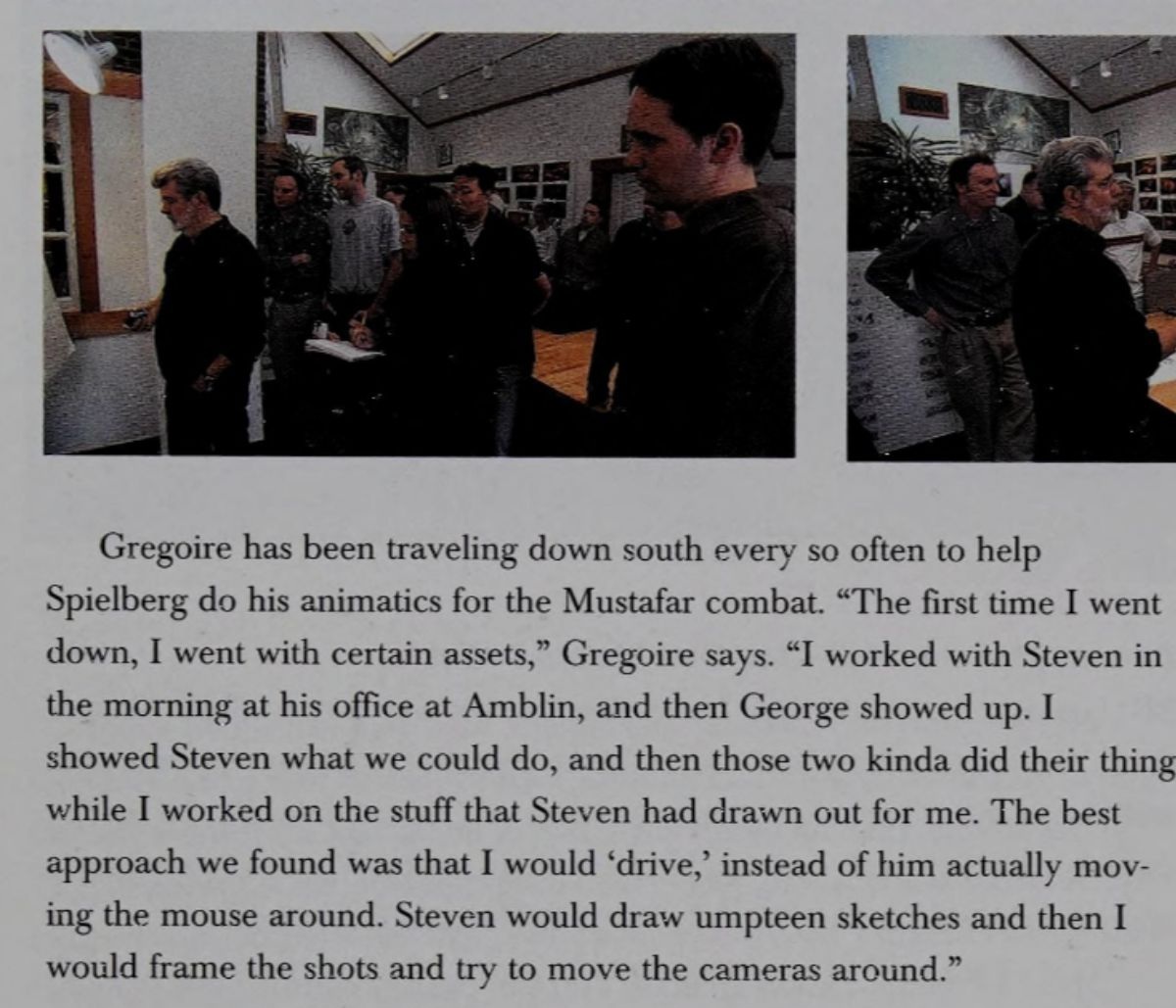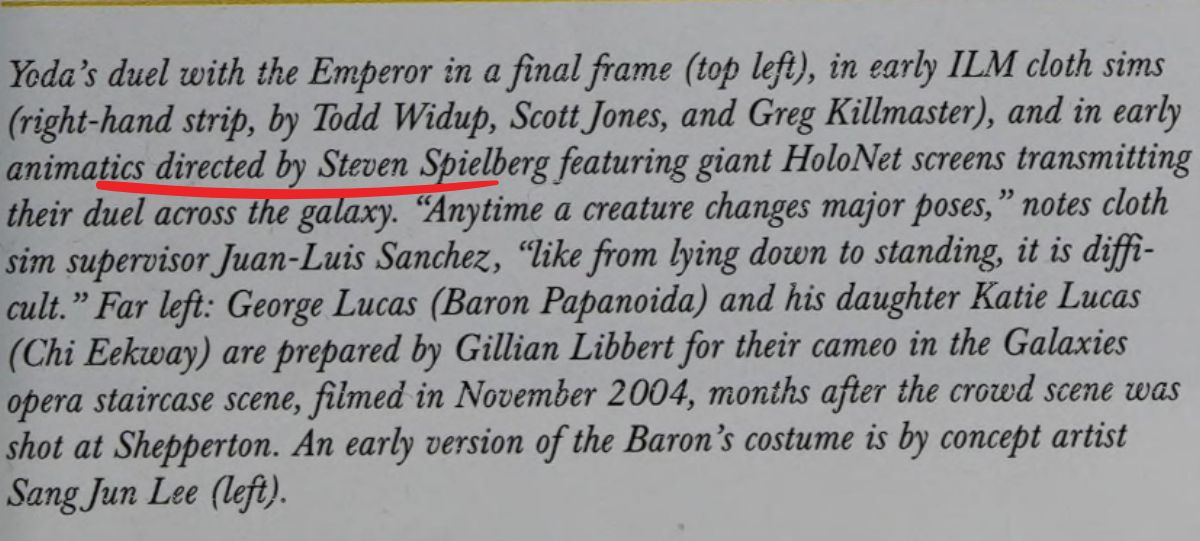The “high ground” moment in Star Wars: Revenge of the Sith is one of the franchise’s most iconic lines, marking the intense conclusion of the legendary duel between Obi-Wan and Anakin on Mustafar.
Over time, it’s even become one of the internet’s most famous memes.
But here’s something most fans might not know: the idea of Obi-Wan securing the high ground to emphasize his advantage came from none other than Steven Spielberg.
Spielberg’s Influence on the High Ground Moment
Nick Gillard, the stunt coordinator for the Star Wars prequels, revealed that Spielberg was behind the now-iconic concept. In an interview on the Chris and Company podcast, Gillard shared that Spielberg suggested the high-ground idea during the development of the scene.
Spielberg and George Lucas were close friends and collaborators, so it wasn’t unusual for Spielberg to be involved in parts of Revenge of the Sith. However, Gillard mentioned that while Spielberg’s suggestion had a lasting impact, it was met with mixed feelings from the crew.
Gillard explained “I think that [was] Spielberg’s idea, that scene…We hated it; it’s common knowledge we hated it. We had a different version for it. We campaigned as hard as we could to get it changed, but George was having none of it.”
The team behind the choreography had envisioned a different approach for the duel’s end, hoping for a finale that wasn’t as straightforward as simply gaining a height advantage. But Lucas stood by Spielberg’s idea, believing it would deliver a powerful message about the relationship between Obi-Wan and Anakin.
The Making of Star Wars: Revenge of the Sith also confirms Spielberg’s involvement during this process. The book shares:
“Gregoire has been traveling down south every so often to help Spielberg do his animatics for the Mustafar combat. ‘The first time I went down, I went with certain assets,’ Gregoire says. ‘I worked with Steven in the morning at his office at Amblin, and then George showed up. I showed Steven what we could do, and then those two kinda did their thing while I worked on the stuff that Steven had drawn out for me. The best approach we found was that I would “drive,” instead of him actually moving the mouse around. Steven would draw umpteen sketches and then I would frame the shots and try to move the camera around.’”

What Could Have Been The Alternate Ending to the Mustafar Duel?
In the same interview, Nick Gillard also shared that the original duel on Mustafar would have ended in a different way from the version we know.
In an alternate version of the scene, both Jedi land on the edge of a lava flow and immediately continue their fight. As the battle rages, Anakin manages to disarm Obi-Wan, grabbing him by the throat and preparing for a fatal blow. In a desperate, last-minute move, Obi-Wan uses the Force to pull his lightsaber back into his hand, intending only to block Anakin’s strike.
However, this action unintentionally severs Anakin’s arms and legs, leaving him grievously wounded. Gillard described it as “a defense gone wrong kind of move,” which would have added an accidental, tragic element to Anakin’s fall.
Nick Gillard said “Originally, they both land on the side of the lava flow and immediately start fighting. Anakin disarms Obi and grabs him by the throat. He’s about to chop his head off, but Obi sucks the lightsaber into his hand in a defensive move to try and block it, and in doing so cuts straight through Anakin’s arms and legs.”
Ultimately, George Lucas opted for a different ending, with Obi-Wan securing a strategic high ground to emphasize Anakin’s overconfidence and hubris as he ignored the warning. This choice created a deliberate contrast between Obi-Wan’s discipline and Anakin’s anger, solidifying Anakin’s fall into darkness and his transformation into Darth Vader.
If you’re interested in watching the interview, the video below includes a timestamp marking when Nick Gillard shares details about the alternate duel ending on Mustafar.
Other Scenes in Revenge of the Sith That Spielberg Helped Shape
Another moment in Revenge of the Sith where Steven Spielberg left his mark was during the devastating Order 66 sequence. In one of the behind-the-scenes features focused on the different planets shown during the purge, it’s revealed that George Lucas brought Spielberg in to offer ideas for how the Jedi deaths would be portrayed. One of his key suggestions was to use the environment to partially obscure the violence—letting the audience feel the tragedy without needing to see everything directly.
In the video, you can hear the production team mention Spielberg’s influence on several scenes, like the death of Jedi Master Aayla Secura on Felucia and the ambush of Plo Koon by the 442nd Siege Battalion on Cato Neimoidia. These moments are more haunting because of what we don’t see, and that subtle approach came straight from Spielberg’s cinematic instincts.
The Yoda vs. Sidious in the Senate chamber
Aside from the behind-the-scenes feature mentioned earlier, I also found out that Spielberg helped direct the scene where Yoda duels Sidious in the Senate chamber. In The Making of Star Wars: Revenge of the Sith, it’s confirmed that Steven Spielberg was involved in shaping that iconic moment. The book states: “Yoda’s duel with the Emperor in a final frame… and in early animatic directed by Steven Spielberg featuring giant HoloNet screens transmitting their duel across the galaxy.” It’s pretty wild to think that one of the most intense lightsaber battles in the prequels had Spielberg’s creative input behind it.

The Grievous chase sequence on Utapau
According to behind-the-scenes information from The Making of Star Wars: Revenge of the Sith, Spielberg was brought in as a “guest director” during the pre-visualization phase of the film. In this role, he helped oversee the animatics for several key action sequences, including the intense pursuit of Grievous by Obi-Wan.

